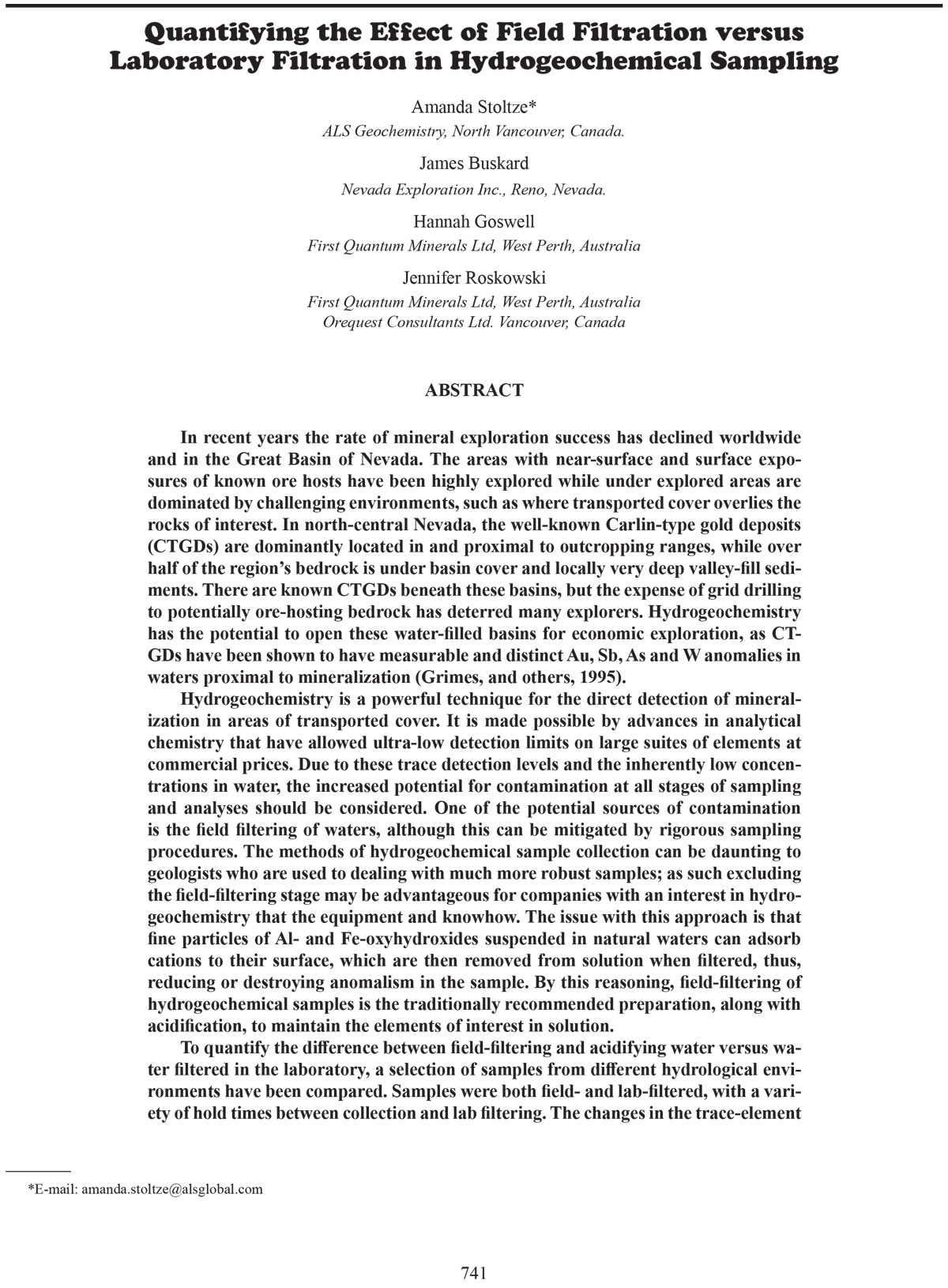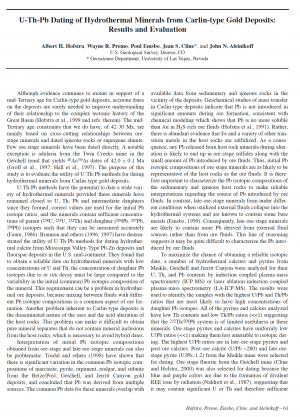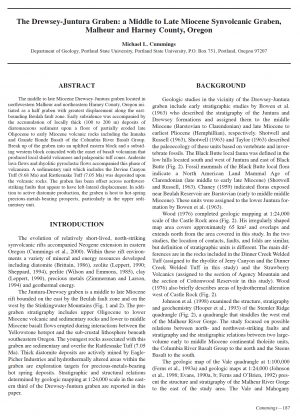Description
In recent years the rate of mineral exploration success has declined worldwide
and in the Great Basin of Nevada. The areas with near-surface and surface exposures of known ore hosts have been highly explored while under explored areas are
dominated by challenging environments, such as where transported cover overlies the
rocks of interest. In north-central Nevada, the well-known Carlin-type gold deposits
(CTGDs) are dominantly located in and proximal to outcropping ranges, while over
half of the region’s bedrock is under basin cover and locally very deep valley-fill sediments. There are known CTGDs beneath these basins, but the expense of grid drilling
to potentially ore-hosting bedrock has deterred many explorers. Hydrogeochemistry
has the potential to open these water-filled basins for economic exploration, as CTGDs have been shown to have measurable and distinct Au, Sb, As and W anomalies in
waters proximal to mineralization (Grimes, and others, 1995).
Hydrogeochemistry is a powerful technique for the direct detection of mineralization in areas of transported cover. It is made possible by advances in analytical
chemistry that have allowed ultra-low detection limits on large suites of elements at
commercial prices. Due to these trace detection levels and the inherently low concentrations in water, the increased potential for contamination at all stages of sampling
and analyses should be considered. One of the potential sources of contamination
is the field filtering of waters, although this can be mitigated by rigorous sampling
procedures. The methods of hydrogeochemical sample collection can be daunting to
geologists who are used to dealing with much more robust samples; as such excluding
the field-filtering stage may be advantageous for companies with an interest in hydrogeochemistry that the equipment and knowhow. The issue with this approach is that
fine particles of Al- and Fe-oxyhydroxides suspended in natural waters can adsorb
cations to their surface, which are then removed from solution when filtered, thus,
reducing or destroying anomalism in the sample. By this reasoning, field-filtering of
hydrogeochemical samples is the traditionally recommended preparation, along with
acidification, to maintain the elements of interest in solution.
To quantify the difference between field-filtering and acidifying water versus water filtered in the laboratory, a selection of samples from different hydrological environments have been compared. Samples were both field- and lab-filtered, with a variety of hold times between collection and lab filtering. The changes in the trace composition are the most marked for Au, with any Au anomalies present in the field
filtered samples almost always absent from the laboratory prepared samples. Other
trace elements were found to be less sensitive to the timing of filtering. These results
suggest that explorers interested in using Au in water as a vectoring tool should field
filter their samples to obtain reliable results. It also suggests that Au in groundwater
is much more likely to be removed from solution than other trace-elements associated
with mineralization. This will limit the footprint size of Au hydrogeochemical anomalies and therefore requires tighter spaced sampling if Au is to be used as a primary
pathfinder. element




